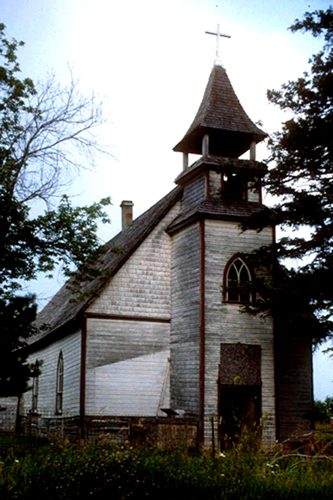Christ Church in Fort Alexander was built by parishioners between 1868 and 1870 on land donated by the Hudson’s Bay company.
The church is an early example of the Red River log frame building technique. Its design is that of a typical prairie church, but with some special features as Gothic windows, hand-carved furnishings, and an exterior bargeboard with leaf and wave cutouts.
Around the church is an extensive cemetery, and beside it the newer Christ Church. The mature trees that once fronted the church have been cut down. The church itself has undergone some extensive renovations and does not appear as in the accompanying photograph here. Both churches, sitting side by side, are maintained by the community.
Fort Alexander is now Sagkeeng First Nation. The area was first used by the Ojibway who set up fishing and hunting camps. The Hudson’s Bay Company operated here from 1795 to 1801.
In 1732 a fur trading post known as Fort Maurepas had been built north of the Winnipeg River by one of La Verendrye’s sons. After its abandonment at the end of the colonial period it was replaced by Fort Bas de la Riviere, a new post on the south side at the mouth at Lake Winnipeg. It was built by Toussaint Lesieur of the Northwest Company and functioned as its Lake Winnipeg district capital.
That post was rebuilt in 1807 by Alexander Mackay, a Northwest Company partner, and for whom it was named in 1808. Fort Alexander continued its operations as a trading post after the Hudson’s Bay and Northwest companies merged in 1821.
Fort Alexander was founded as a mission in 1864 with services from the Canadian Missionary Society. In 1901 it was transferred to the Diocese of Keewatin. From 1986 to 1988 it was transferred to the Diocese of Rupert’s Land for pastoral care.
• Photographed in 2009.
• Published in Senior Scope, October 10, 2019.

